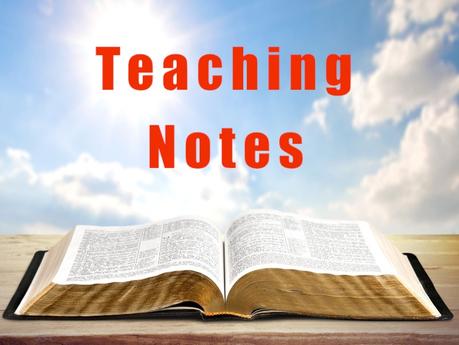Grace Thoughts
Teaching Notes: On Genesis 11

Teaching Notes are Bible studies we taught before GraceLife Ministries began publishing articles online in 1995. Some were presented as sermons, others as group studies.
Our hope is that these older studies will be a blessing to you in your life and ministry. Please use them in any way God leads you.
These teaching notes are from a series of studies about the Book of Genesis.
[These notes are from a study from almost 45 years ago.]
Genesis 11:1-4
“And the whole earth was of one language, and of one speech. And it came to pass, as they journeyed from the east, that they found a plain in the land of Shinar; and they dwelt there. And they said one to another, Go to, let us make brick, and burn them thoroughly. And they had brick for stone, and slime had they for morter. And they said, Go to, let us build us a city and a tower, whose top may reach unto heaven; and let us make us a name, lest we be scattered abroad upon the face of the whole earth.”
At some time after the Flood (between Noah and Peleg), people moved eastward. They found a plain in Shinar (Šīnʿār). This is probably the area known as “Babylon.” They settled there.
There was a worldwide language. This probably was the same language spoken by Adam and Eve. Nothing had changed it in the nearly 1800 years of human history.
The people decided to build a city with a tall tower. They used brick instead of stone and tar instead of mortar. This may have been a change in building because of the new location. Apparently, these building materials were plentiful in this region.
Between the time of Nimrod and Peleg there seems to have been a degeneration of worship toward God. Archaeological finds of ancient Babylon show that this city and the great tower was a shrine to the gods of the Babylonians, Merodach and Zer-panitu^m. Astrology may have also been involved with the tower (“let us build us a city and a tower, whose top may reach unto heaven”).
Genesis 11:5-9
“And the Lord came down to see the city and the tower, which the children of men builded. And the Lord said, Behold, the people is one, and they have all one language; and this they begin to do: and now nothing will be restrained from them, which they have imagined to do. Go to, let us go down, and there confound their language, that they may not understand one another’s speech. So the Lord scattered them abroad from thence upon the face of all the earth: and they left off to build the city. Therefore is the name of it called Babel; because the Lord did there confound the language of all the earth: and from thence did the Lord scatter them abroad upon the face of all the earth.”
The Lord was observing all that was going on. He knew what man was doing and becoming. Quoting God in Genesis 8:21 – “for the imagination of man’s heart is evil from his youth.”
Again, with purpose and mercy, God intervened in history and confused the languages of people so they couldn’t understand each other. The people stopped building the city and the tower and most moved away. Apparently, Nimrod stayed to continue building his kingdom.
An ancient tablet reads, “The building of this illustrious tower offended the gods. In a night they threw down what they had built. They scattered them abroad, and made strange their speech.”
Polytheism will play a large part in the rest of history.
Before the Flood, flesh (fallen humans) made its gods man himself. There seemed to be battles between the flesh and Spirit in the worship of one true God.
After the Flood, flesh moved in a new direction of worshipping gods and self. Polytheism took hold on the human race.
God intervened in the unified plot of the human race and changes languages and brought total confusion upon humans. Included there may have been the change of races from one to three (Caucasian, Negroid, and Oriental) with many color combinations of each. People would not be able to unify again against the Lord. They would be small family groups divided by language.
The change of speech would also account for the various names for Noah in Flood accounts.
Genesis 11:10-26
“These are the generations of Shem: Shem was an hundred years old, and begat Arphaxad two years after the flood: And Shem lived after he begat Arphaxad five hundred years, and begat sons and daughters. And Arphaxad lived five and thirty years, and begat Salah: And Arphaxad lived after he begat Salah four hundred and three years, and begat sons and daughters. And Salah lived thirty years, and begat Eber: And Salah lived after he begat Eber four hundred and three years, and begat sons and daughters. And Eber lived four and thirty years, and begat Peleg: And Eber lived after he begat Peleg four hundred and thirty years, and begat sons and daughters. And Peleg lived thirty years, and begat Reu: And Peleg lived after he begat Reu two hundred and nine years, and begat sons and daughters. And Reu lived two and thirty years, and begat Serug: And Reu lived after he begat Serug two hundred and seven years, and begat sons and daughters. And Serug lived thirty years, and begat Nahor: And Serug lived after he begat Nahor two hundred years, and begat sons and daughters. And Nahor lived nine and twenty years, and begat Terah: And Nahor lived after he begat Terah an hundred and nineteen years, and begat sons and daughters. And Terah lived seventy years, and begat Abram, Nahor, and Haran.”
The genealogy of Shem gives specific details on the ages of descendants to Abram. The account picks up from Peleg with his son, Reu (rə‘ū); Rez’s son, Serug (śərūḡ); Serug’s son, Nahor (nāḥōwr); Nahor’s son, Terah (tāraḥ); and Terah’s sons, Abram (’aḇrām), Nahor (nāḥōwr) and Haran (hārān). There were 390 years between the birth of Shem and the birth of Abram. There were 292 years between the Flood’s end and Abram’s birth. Noah would have been alive when Abram was born.
There seems to be an unbroken chain from Adam to Abram through Methuselah and Noah. Methuselah knew Adam, Noah knew Methuselah, and Noah may have known Abram. Noah would have died when Abram was about 58 years old. Shem, the patriarch of the lineage of Abram, would have also known Methuselah and Abram (Shem lived to be 600 years old). The story of Adam, Eve, creation and fall would have come through the generations well preserved.
One of the interesting things to note in this genealogy is that God’s Word is beginning to shape the future of man’s lifespan. In Genesis 6:3, God said that man’s days would be limited to 120 years. While some scholars believe God was giving humans 120 years to repent before the Flood, the prophecy may have had a two-fold purpose.
- Noah lived to be 950 years old
- Noah’s son Shem lived to be 600 years old
- Arphaxad, Shelah and Eber lived to be less than 500 years old
- Peleg, Reu and Serug lived to be less than 250 years old
- Nahor, Abram’s grandfather, lived to be under 150 years
Slowly, but surely, God’s will was accomplished. God may have used the natural process of the lack of a protective water canopy after the Flood. The killing rays of the sun may have sped up the process of cell death in humans and animals alike. Prior to the Flood, men did not produce children until they were at least in their mid-60s. After the Flood, men began to sire children in their late 20s to mid-30s. One exception was Terah who was 70.
Genesis 11:27-30
“Now these are the generations of Terah: Terah begat Abram, Nahor, and Haran; and Haran begat Lot. And Haran died before his father Terah in the land of his nativity, in Ur of the Chaldees. And Abram and Nahor took them wives: the name of Abram’s wife was Sarai; and the name of Nahor’s wife, Milcah, the daughter of Haran, the father of Milcah, and the father of Iscah. But Sarai was barren; she had no child.”
The biblical account focuses on the family of Terah. No other family has received as much space or in-depth view from Adam on.
Terah has three sons: Abram, Nahor and Haran.
Haran is presented first. Haran had a son named Lot. Haran died while his father was still alive. He died in Ur of the Chaldees, where he was born.
Ur of the Chaldees has been found in Southern Mesopotamia. Great archaeological excavations were made between 1922-34. Much is known about the Chaldean’s lives, homes and businesses. Much is also known about their religion. They also had a high tower (ziggurat) which was 200 feet by 150 feet by 70 feet high, called “hill of heaven” or “mountain of God.” On the top stage was the shrine of Nanna, the moon god, patron of the city. Joshua 24:2 says that Terah “served other gods.”
Abram’s wife was Sarai (śārāy). She was barren and had no children. This is the first time that a woman is spoken of in the Bible as being barren. All other husband-wife relationships mentioned led to children. This barrenness seems to have some important significance.
Genesis 11:31-32
“And Terah took Abram his son, and Lot the son of Haran his son’s son, and Sarai his daughter in law, his son Abram’s wife; and they went forth with them from Ur of the Chaldees, to go into the land of Canaan; and they came unto Haran, and dwelt there. And the days of Terah were two hundred and five years: and Terah died in Haran.”
Terah took Abram, Sarai and Lot and headed north. The pain of Haran’s death may have been a reason. After they left Ur, however, they came to Haran (a city). They may have settled there because of the name.
Terah lived 205 years and died in Haran. If this was on top of the previous 70 years, he would have been 275 years old.
Next Time
We will look at Genesis Chapter 12 in the next part of our special series.
[Thank you for reading these teaching notes from almost 45 years ago. My prayer is they will be a blessing to you and your life and ministry.]
 AbramFloodGenesisNoahPre-Flood WorldShem
AbramFloodGenesisNoahPre-Flood WorldShem

Published by gracelifethoughts
Founder & Director of GraceLife Ministries View all posts by gracelifethoughts
